
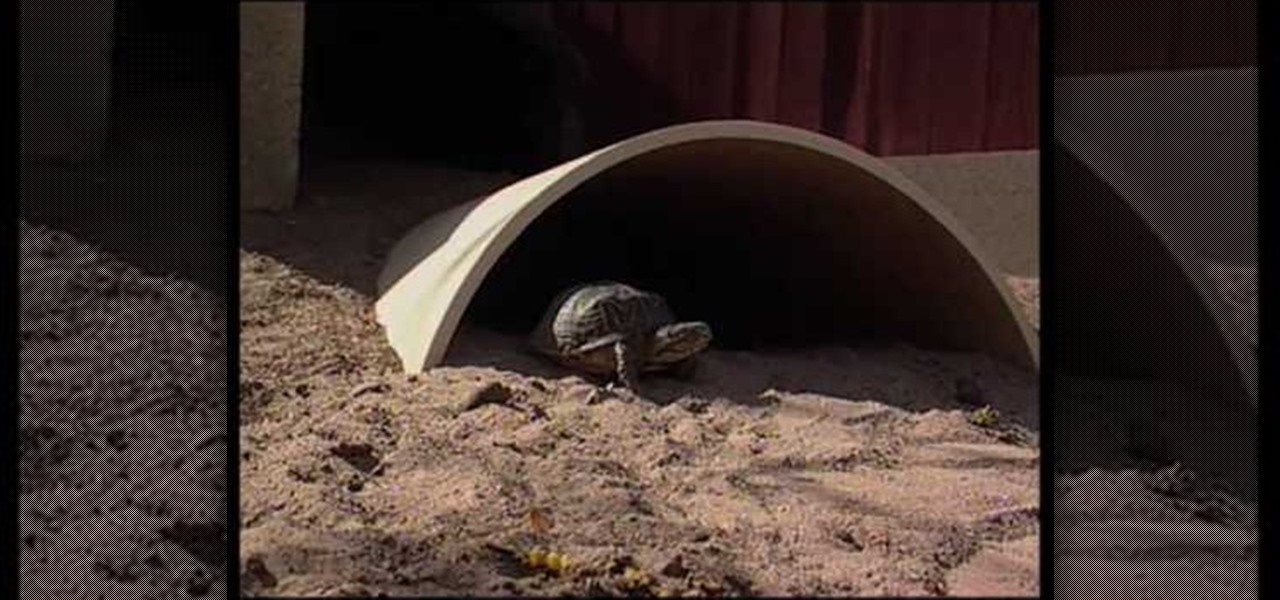
How To: Create a desert tortoise habitat
If you need to make a desert tortoise habitat you should be sure to do it properly since they are endangered animals. Desert tortoises like to eat plants because 90% of their diet should come from natural grasses. You should make sure they have dandelion, muellen and a bit of alfalfa. You can also feed them lettuce and make sure they get the right vitamins. You also need to make sure the soil is right for the desert tortoise. To build a habitat properly you need PVC pipes and slice these in h...

How To: Use the Digital Lux Meter for reptile habitats
In this video tutorial, viewers learn how to use the Digital Lux meter. The meter is packed in a carrying case. Begin by removing the unit and the plastic cover from the sensor. Then install the 9V battery. This device has 3 settings and has a hold function. To use it, move the sensor underneath a light source until your receive the highest reading. It is recommended to have 8000-12000 SI for a reptile's habitat. This video will benefit those viewers who have a reptile and Digital Lux meter, ...
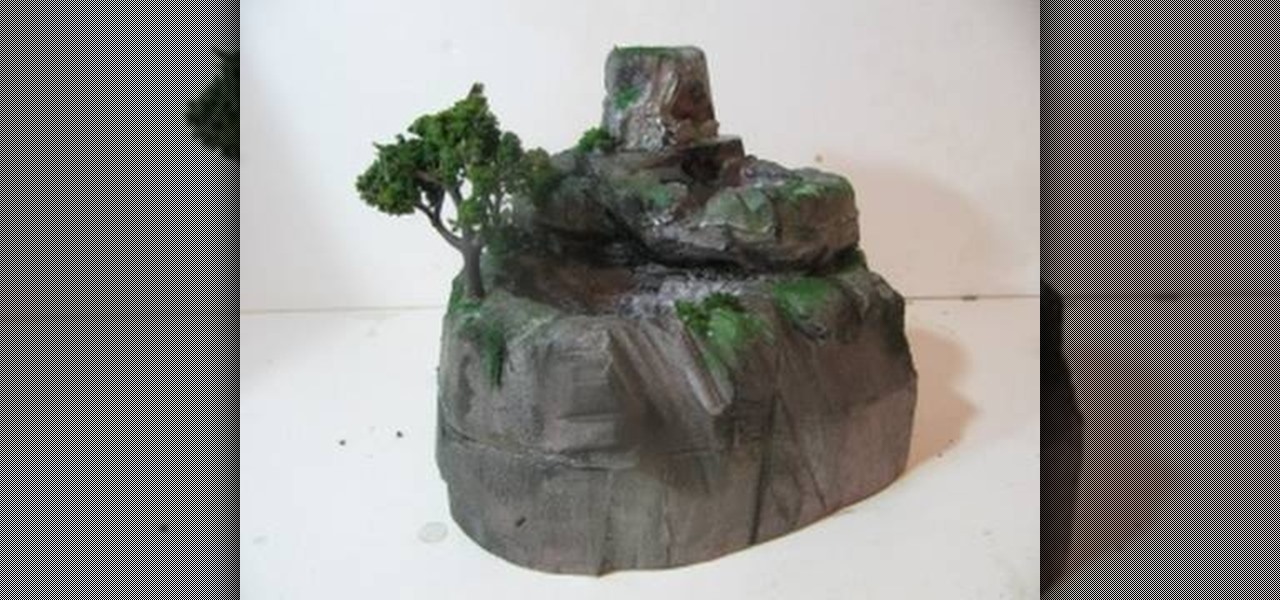
How To: Make a terrarium waterfall at home
If you own any bored reptiles and want to zest up their terrarium environment on a budget, this video will teach you how to make a cool waterfall for their terrarium using basic materials. It should take a couple of hours, and the results are very pretty (depending on your painting skills) and sure to entertain any small-to-medium-sized lizard. Not recommended for dinosaurs.
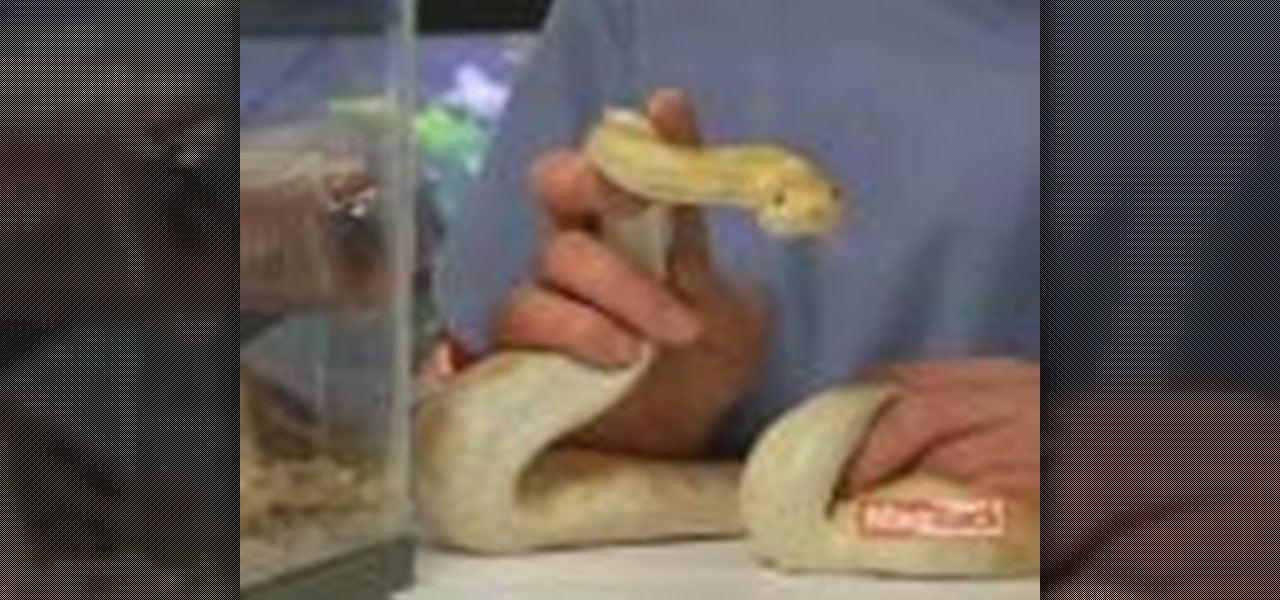
How To: Take care of pet reptiles
In this tutorial, learn how to take care of a pet reptile (like a snake, turtle, iguana or lizard) and why they make wonderful pets. Marc Morrone will walk you through your new pet and tell you how to feed and care for them. Some reptiles are meat-eaters, others are vegetarians, some need warm weather, some don't. If you are unsure of what to feed your new pet, check out this clip and get all the facts.

How To: Properly feed a reptile so they stay healthy
Reptiles need special food too and in this tutorial, Marc Moronne will show you exactly how to care for your scaley friends. Make sure you give your reptiles the right amount and type of food so they can live a long, happy and healthy life.
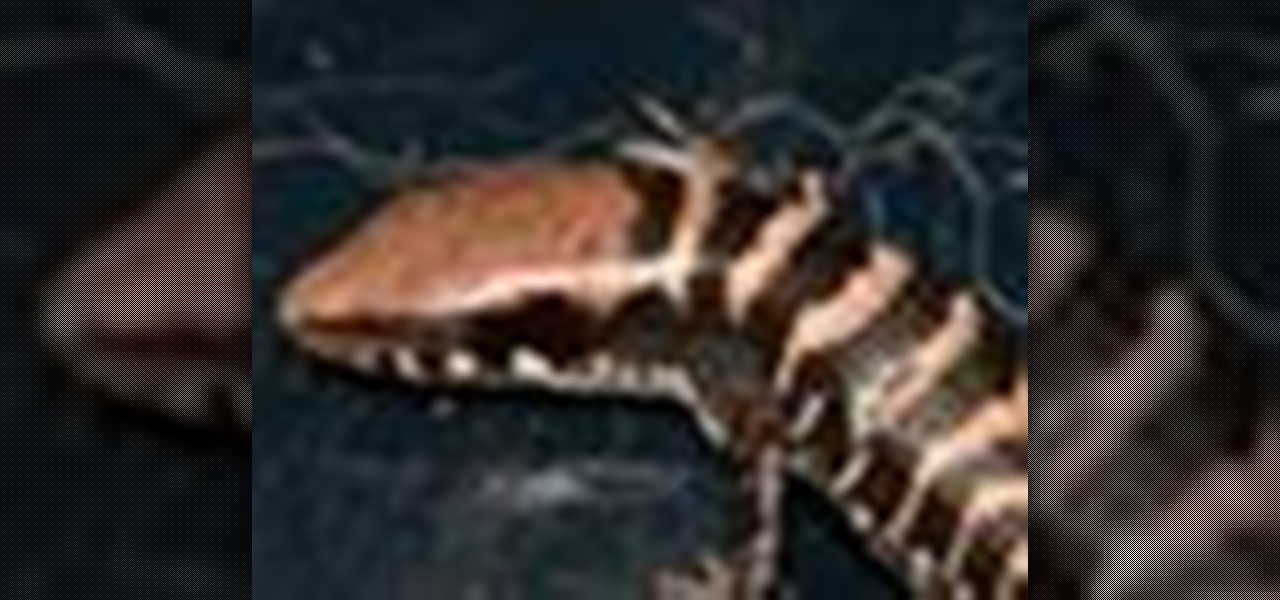
How To: Emulate the correct lighting for your reptile habitat
Make sure your reptile is basking in the correct lighting. This informative video instructs you on proper UV lighting to emulate your reptiles natural environment. Whether it be your Gecko, Snake, or Bearded Dragon, this two part video will show you the do's and dont's to benefit reptiles health . Educate yourself on how to properly light your lizard to always look his best. Wether it be your Gecko, snake, or Bearded Dragon, this two part video will show you the do's and dont's for your repti...

How To: Handle a king cobra
Have an urge to handle a highly toxic snake? In this clip from the Discovery Channel series, "Hazard Pay," host Curt Doussett tries to handle a thirteen foot King Cobra snake named Elvis, and what happens next? He drops him. Maybe we should leave the snake handling to the professionals? Handle a king cobra.

How To: Build a backdrop for a reptile terrarium
A well-designed terrarium is essential for the health of your reptiles. This how-to video demonstrates the process of making a backdrop for your pet's terrarium. Start out by lining the aquarium with strips of bark. Then use caulk to secure them into place, and allow to dry for 36 hours. Apply eco-dirt to the bark, and then shake and brush off the excess. Watch this video pet care tutorial and learn how to build a backdrop for a reptile terrarium. Build a backdrop for a reptile terrarium - Pa...
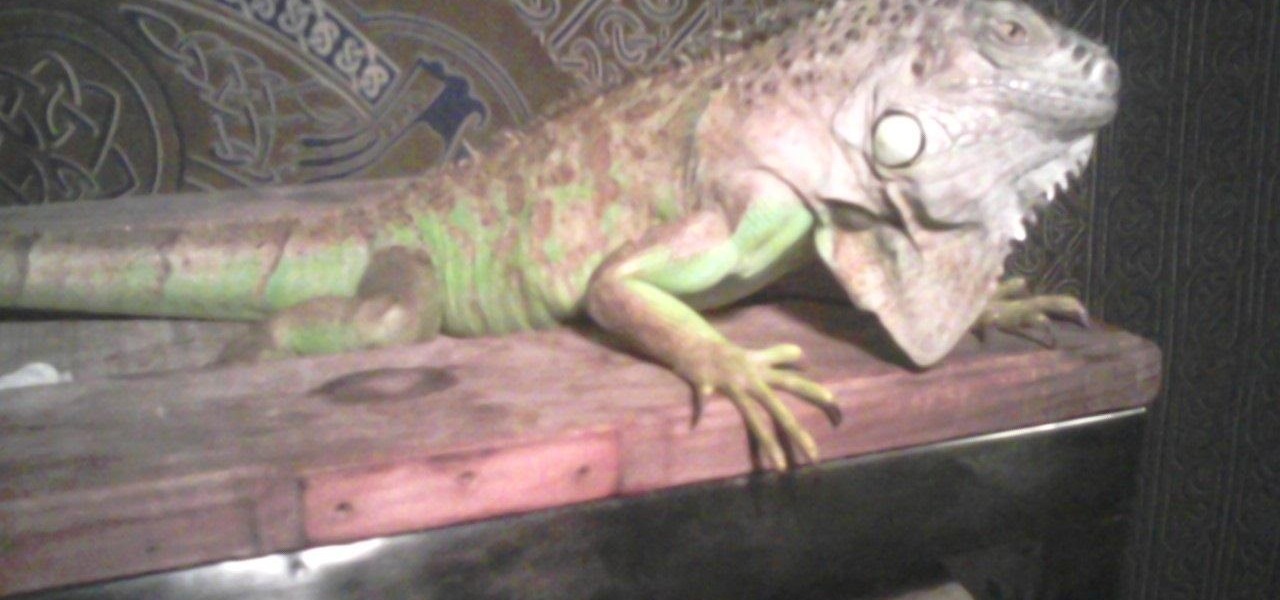
How To: Care for an Iguana Without a Cage
First of all, I would like you all to meet my good friend Iggy. There he is, in all his scaly reptilian glory. As you can see, he spends a lot more time on top of his cage than inside of it. You see, Iggy here doesn't deal well AT ALL with confinement. I don't know if it's possible for a lizard to be claustrophobic, but if it is possible, then Iggy definitely is. When his previous owner gave him to me, I tried to keep him in the cage, but I quickly realized that it was a bad idea. When confin...
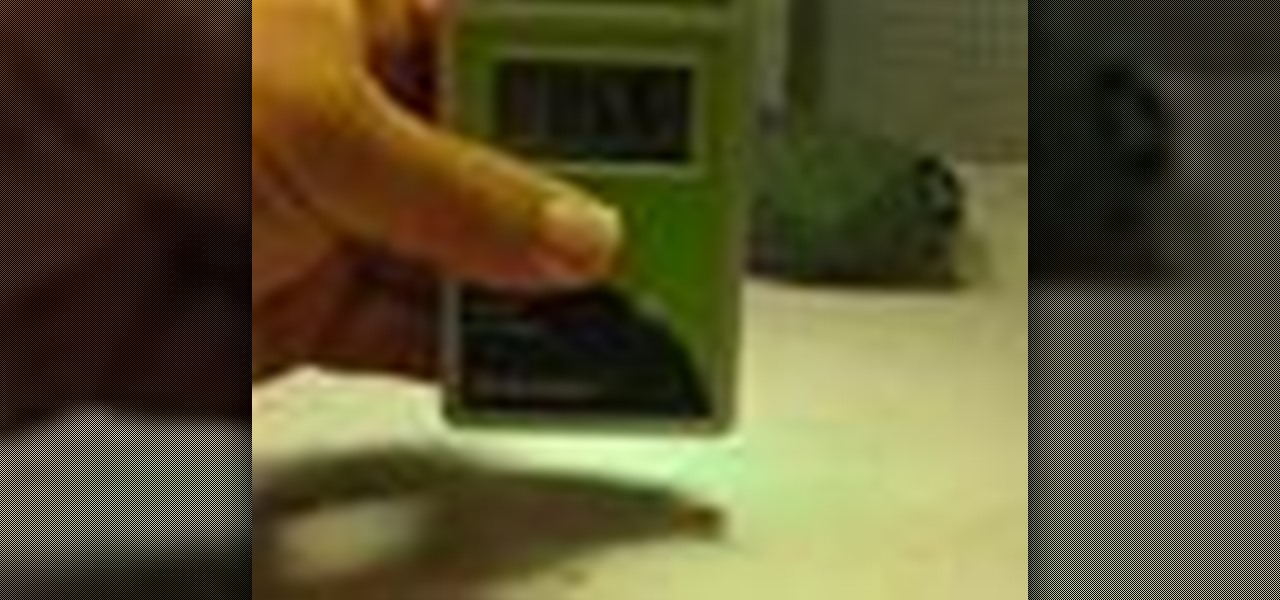
How To: Use the Solarmeter 6.2 for reptile habitats
In this video, we learn how to use the Solarmeter 6.2 for reptile habitats. This is the most accurate hand held meter on the market. Make sure you use UV blocking sunglasses while using this. This type of light will provide the reptile with needed vitamin D. Make sure you set this up without the reptile in the cage. Move the device until you find the center, then see how far down the UV light goes. Move the light according to where the light hits. Check until you have the right amount of ligh...
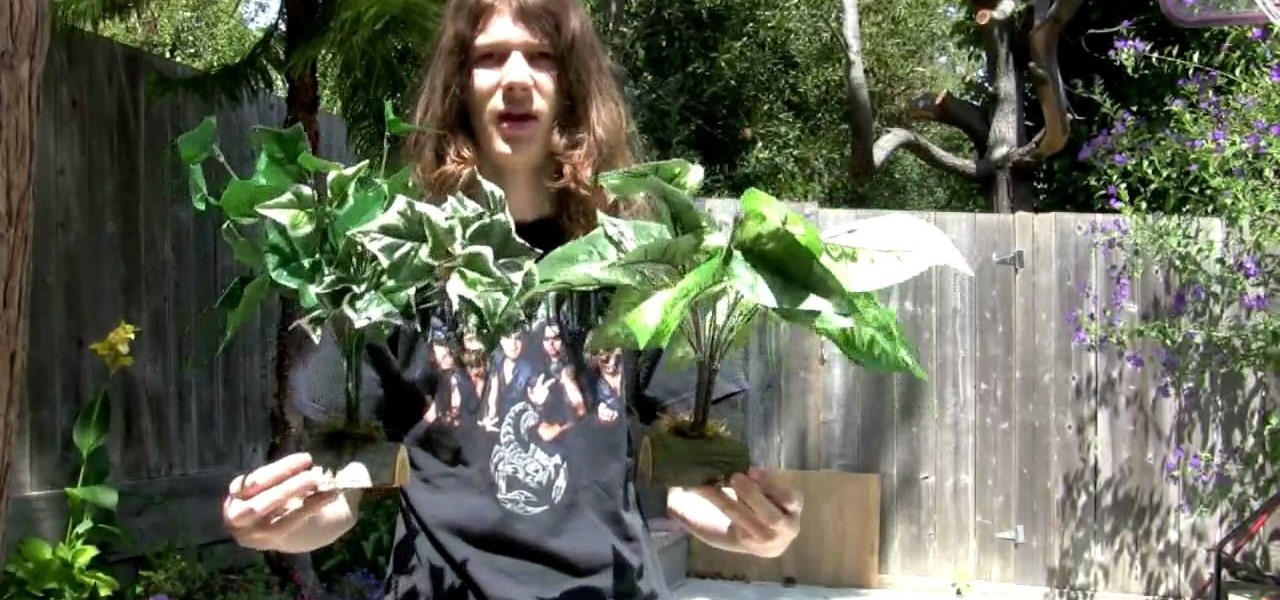
How To: Make money-saving standing reptile plants
Reptiles come from a variety of biomes, but certain reptiles, like snakes and lizards, do prefer a wet, tropical environment with lots of tree and bush cover. Because they feel more at home in this kind of environment, you must try to simulate their preferred surroundings when you take one home as a pet.

How To: Identify a copperhead snake in your garden
If you live in Maryland, there are certain things that you need to be aware of when out in the garden. One of them being snakes.
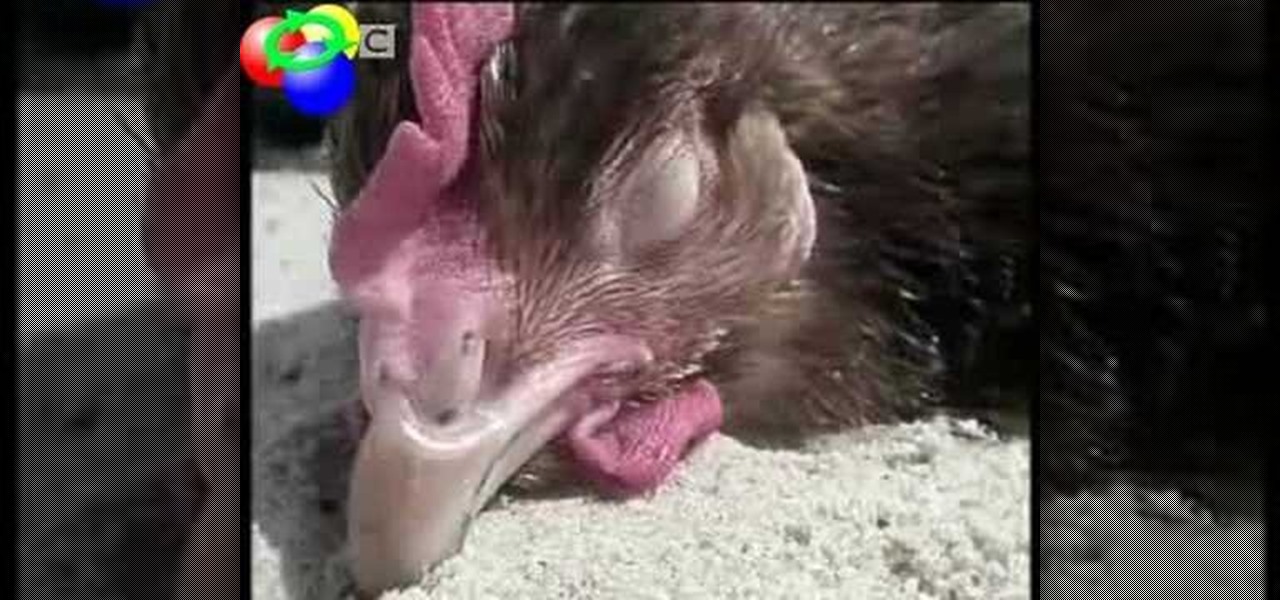
How To: Put alligators and chickens into a trance-like state
In this BBC Earth video documentary, you'll see some amazing tricks you can perform with alligators and chickens. You'll see the exact process to put alligators and chickens into a trance-like state.
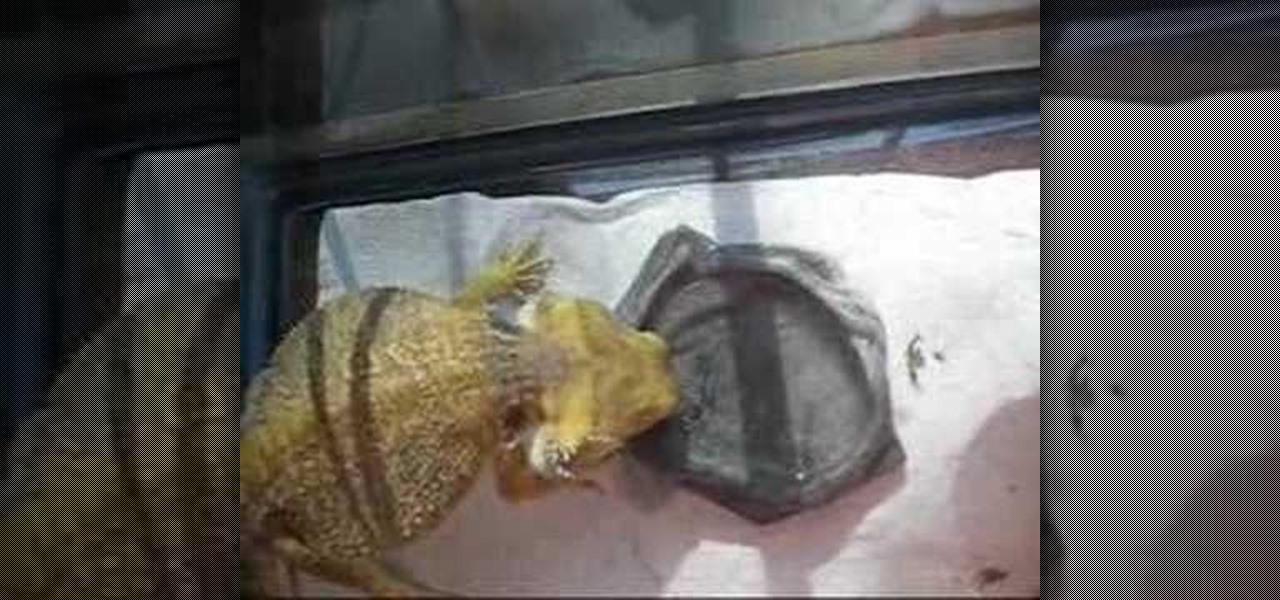
How To: Teach a bearded dragon to drink from a water dish
Finally, a way to teach a bearded dragon how to drink from a water dish on their own so. While acclimating to a new habitat, a bearded dragon might not understand how to utilize the water supply. Watch this video pet training tutorial and learn how to teach a bearded dragon to drink from a water dish.

How To: Catch a rattlesnake with Johnny Knoxville
Manny Puig teaches Johnny Knoxville how to handle a rattlesnake with a sissy stick. This is very dangerous and should only be done with a professional's help.

How To: Build a bat house
Build a bat house at home to hold a colony of up to 100 bats. Learn how to build a bat house with these materials in this free bat conservation video.

How To: Identify a snake
Identifying snakes is difficult to do accurately. Identify snakes using field guides and the Internet with tips from a certified animal control officer in this free reptile pets video.

How To: Care for pet aquatic turtles
Pet turtles don't like to be handled, which is an important consideration when choosing pets. Learn more about turtle characteristics with tips from the owner of a reptile store in this free pet care video.

How To: Care for box turtles
Box turtles can be found in many places and make great pets. Learn more about identifying box turtles, including different types of box turtles in this free pet care video.

How To: Pick a tortoise
A tortoise can make a great exotic pet and come in several varieties. Learn how to pick out a healthy tortoise as a pet with tips from a reptile expert in this free pet care video.

How To: Care for crested geckos
Crested geckos make great family pets for anyone looking for a fun, small reptile. Learn how to care for crested geckos with expert tips on habitat and diet in this free pet care video.

How To: Set up a reptile terrarium
Watch as a seasoned professional explains the supplies needed to set up a reptile terrarium in this free online video about reptile care.
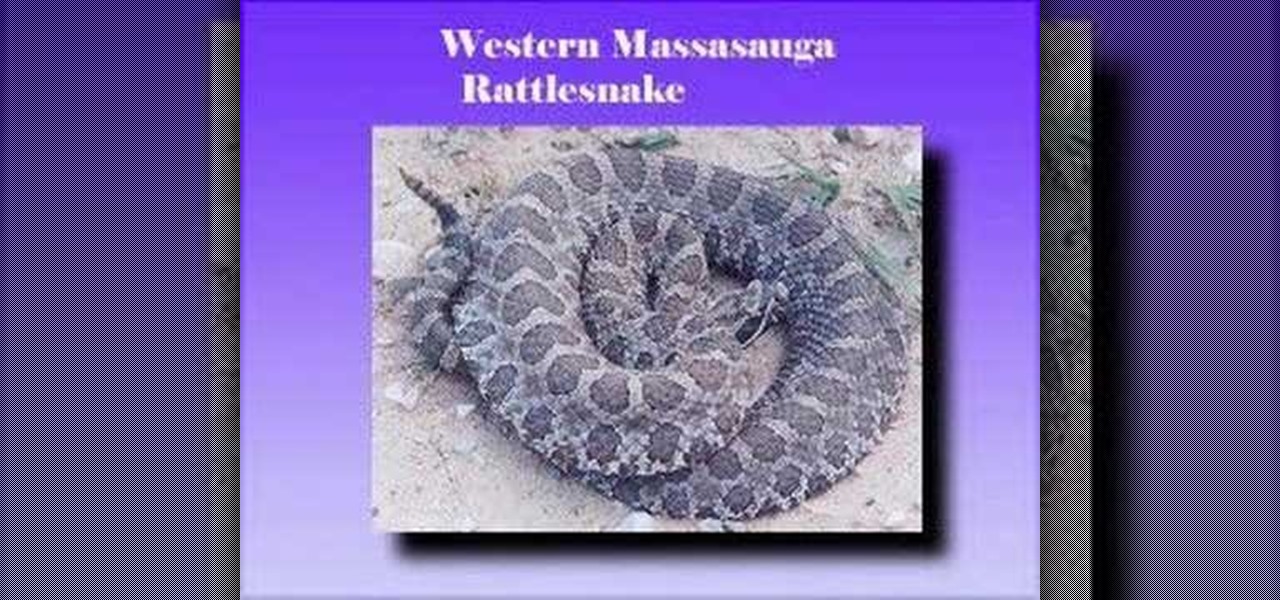
How To: Handle encounters with poisonous reptiles in the wild
The Bigfoot Field Guide presents an Informational Video about Dangerous Creatures-Snakes, Lizards, Spiders and Scorpions. This video is designed to let people know about what types of creatures out there are poisonous in the event they come across one in the field. Learn how to handle encounters with dangerous snakes, scorpions, lizards, and other poisonous creatures out in the wild by watching this video tutorial.

How To: Set up a heating snake rack
This video tutorial shows how to assemble a heated storage rack for snakes. Learn how to provide a comfortable environment for snakes within a snake storage rack.

How To: Create a leopard gecko enclosure
This is a step-by-step video guide on how to create a leopard gecko enclosure/habitat.

How To: Build a turtle raft
Learn how to build a turtle raft to attract water turtles for sun bathing. Pull in an old raft and rebuild it to withstand continuous use for the next couple of years. Turtles use it almost immediately. This is nature watching made simple! The turtles using this raft are Eastern Painted and Red-Eared Sliders.
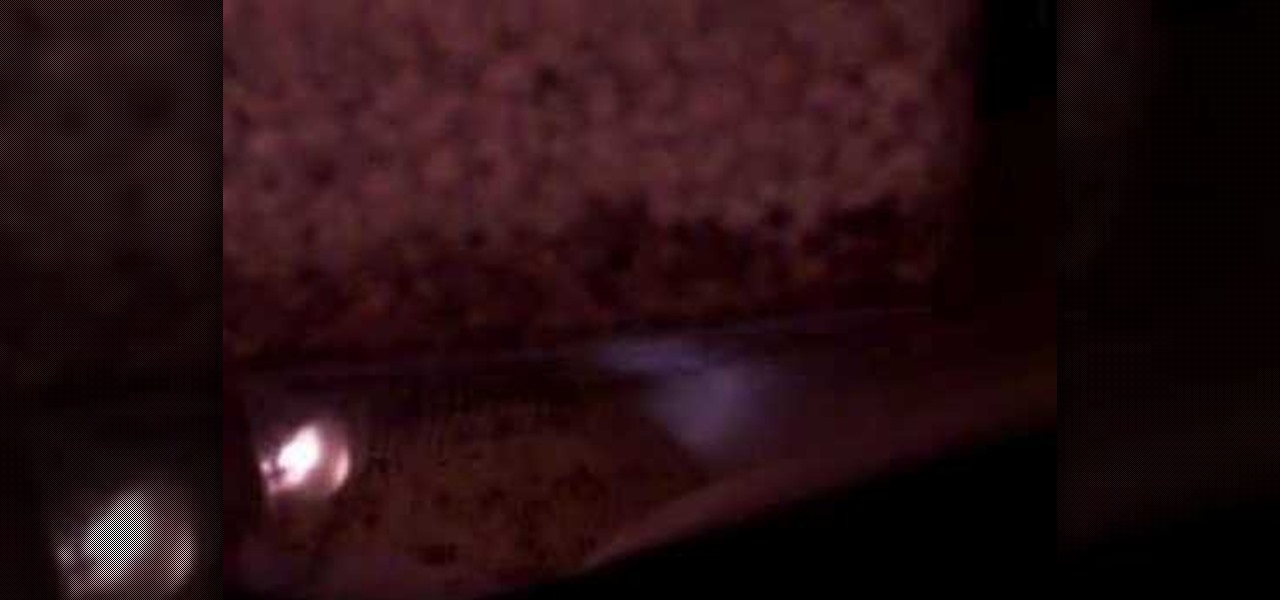

How To: Breed leopard geckos
Check out this video to learn how to breed leopard geckos. Make sure you have a male. (Well, duh!) One male can breed with up to seven females.

How To: Build a habitat for your Leopard Gecko
Do you know what part of the world the Leopard Gecko comes from? Does it like its home to be dry, wet, or somewhere in between? Do they like to climb trees and plants? Follow Host Hillary Dupont and ReptilesTV's Senior Herpetologist Ron Dupont as they discuss the environmental and habitat needs of your Leopard Gecko.
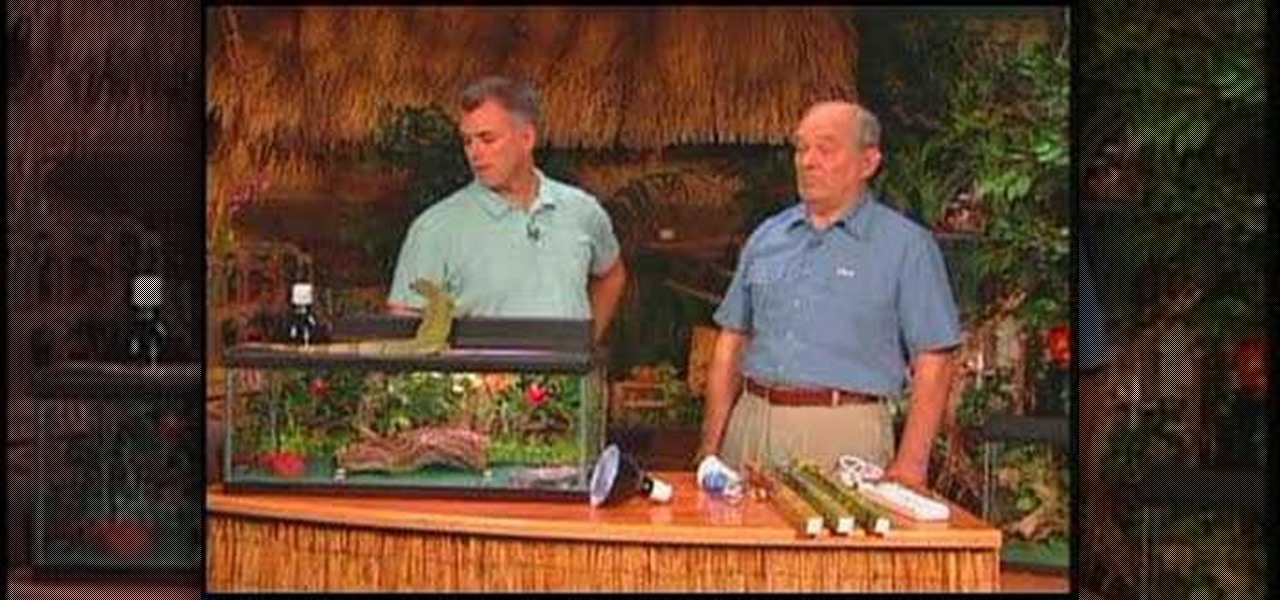
How To: Put proper lighting in your Green Iguana habitat
Do you light your Green Iguana only so it can see? As our expert clearly explains in this chapter, it's more than just visual -- proper lighting is actually essential to keeping your iguana alive!

How To: Feed your Green Iguana with a balanced diet
Bon appétit! In part two of our Iguana Diet topic, Ron demonstrates the importance of dietary supplements further, advice on a sound feeding schedule for your Iguana, depending on its size, a warning on bad foods for your lizard, and a recap of important points in this diet series.

How To: Check your Green Iguana for health problems
You don't have to have a university degree to understand the basics of Iguana health and wellness. Let our expert show you in this first section on iguana health how to examine the animal's body, from teeth to tail tip, to determine its measure of health and how to deal with problems. Ron also advises on when it is best to consult a veterinarian.

How To: Design a desert habitat for your reptiles
Join Host Israel Dupont and Zilla's Phil Bartoszek step by step, as they create a natural-looking desert-style habitat (for a Leopard Gecko) using Zilla's exclusive desert series of products. This program is not only instructive, it's fun!
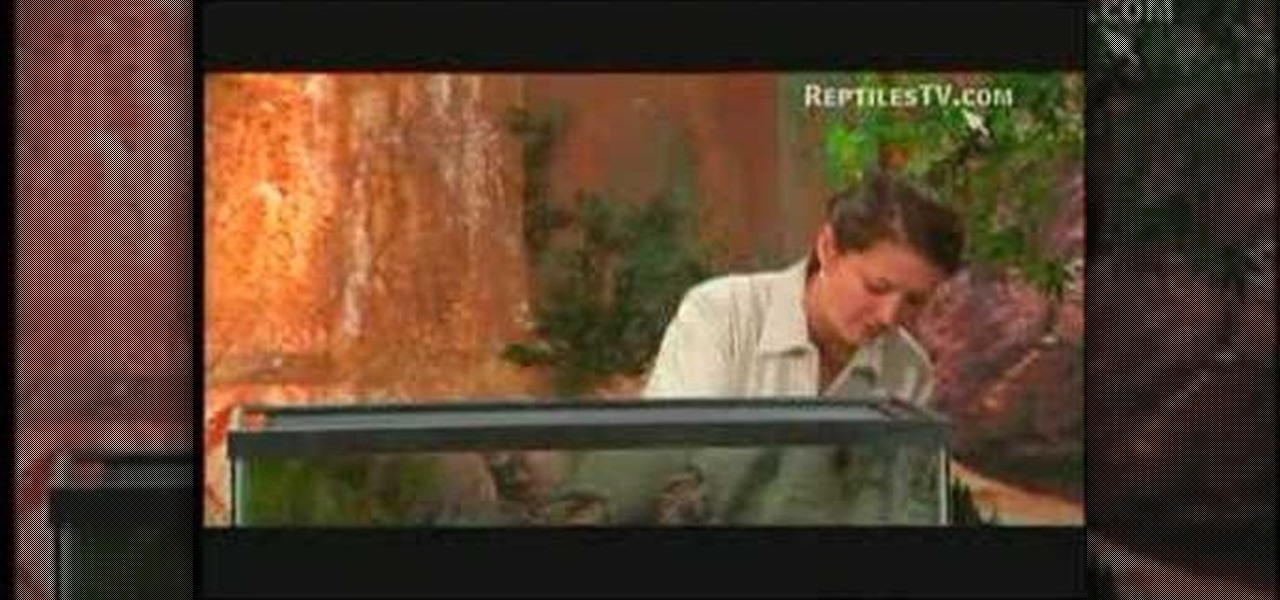
How To: Design an African spur-thighed tortoise habitat
Join Host Israel Dupont with herpetologist Hillary Dupont as they discuss creating a habitat for your African spur-thighed/G. Sulcata tortoise. Hillary explains the tortoise's natural geographic location, its environmental requirements. And she and Israel begin designing the habitat with the substrate (bedding) and décor/enrichment elements.
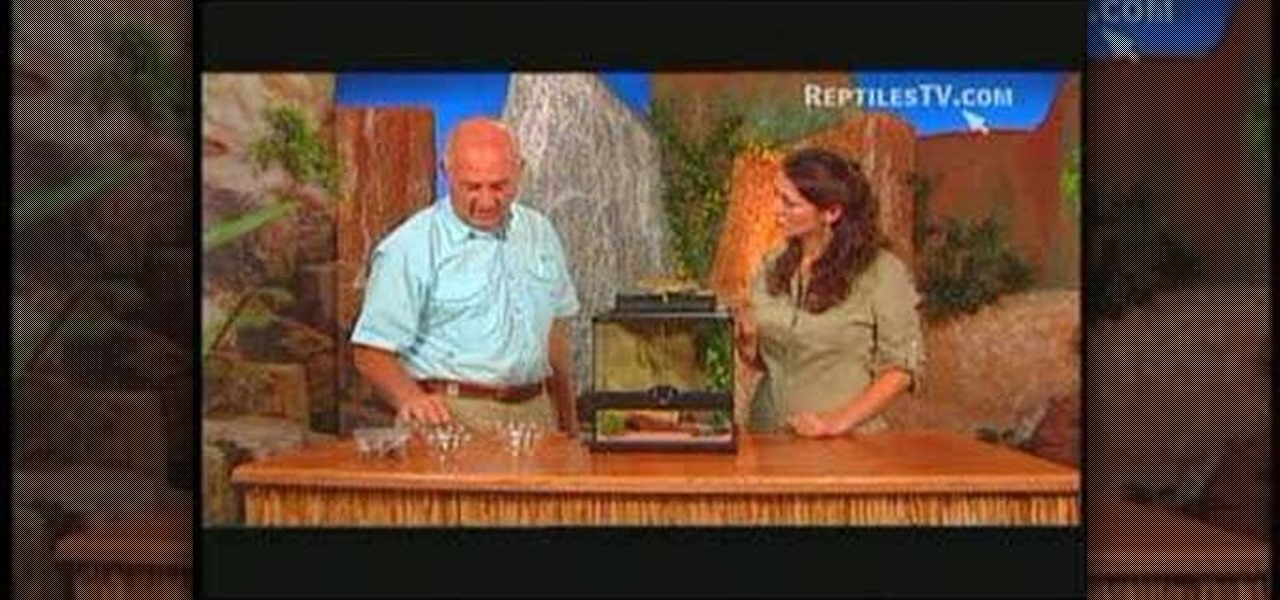
How To: Feed a leopard gecko an appropriate diet
Learn all about your leopard gecko's eating requirements with this informative and easy-to-follow program that covers all the important topics of the gecko's diet, from vegetables, to vitamins, to mealworms, guided by Host Hillary Dupont and our senior herpetologist Ron Dupont.
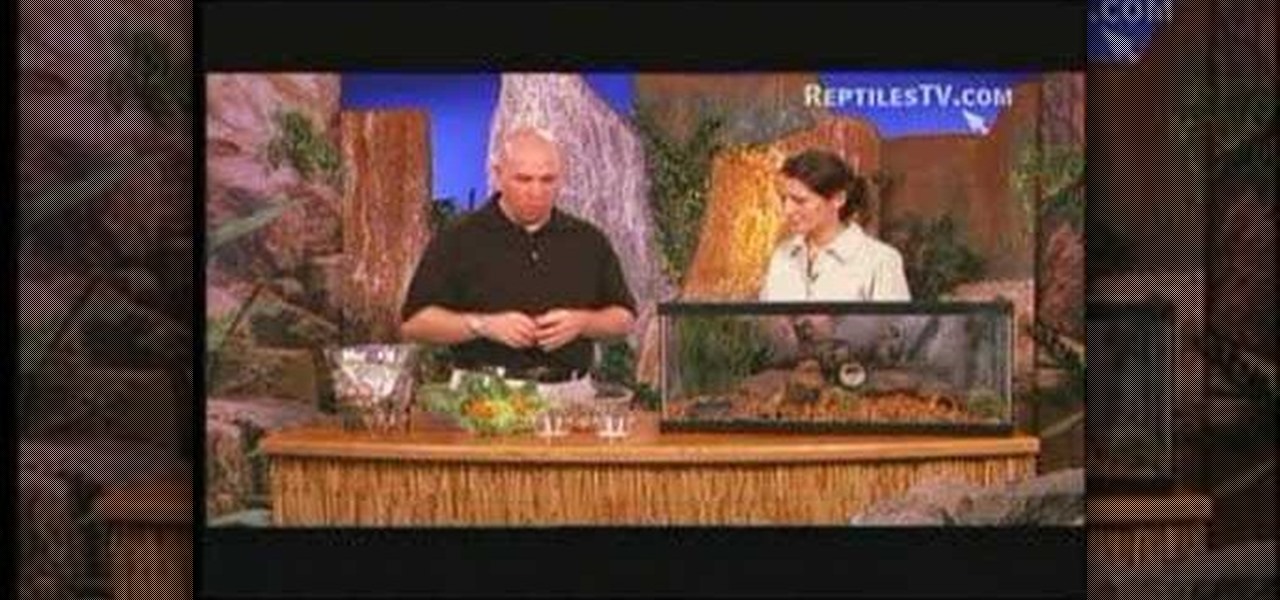
How To: Feed the African spur-thighed tortoise
The importance of the African spur-thighed/G. sulcata tortoise's dietary needs, including variety, vitamin supplements, differences in the requirements of younger tortoises versus older ones, what NOT to feed, and the pros and cons of feeding processed foods and fresh foods.
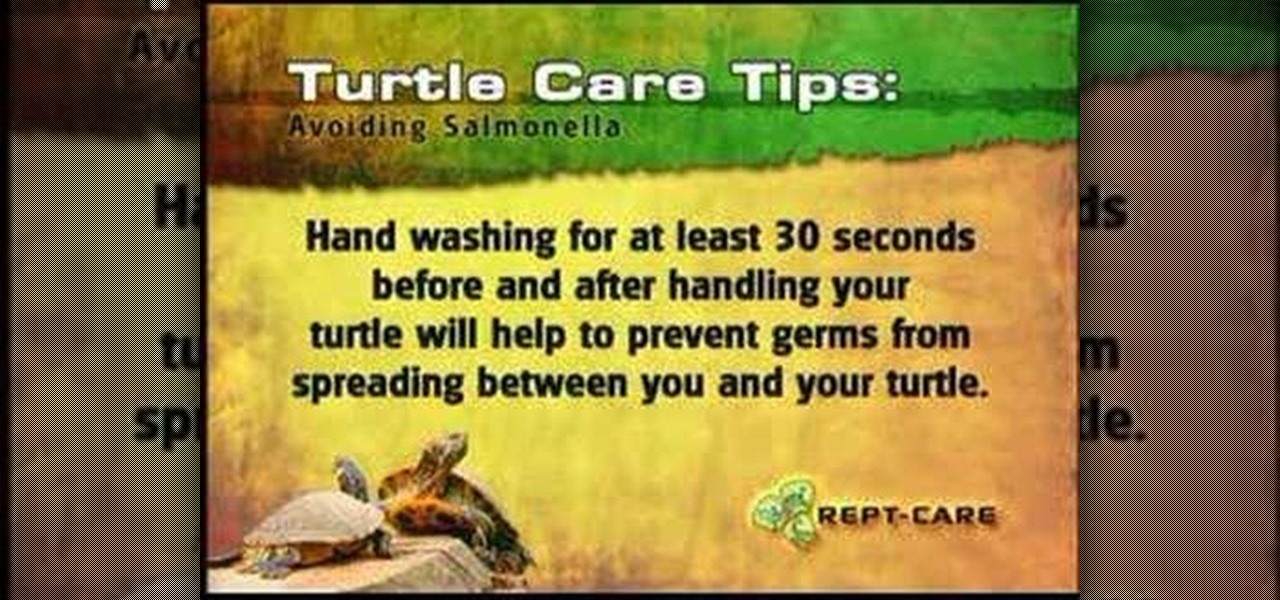
How To: Lower the risk of salmonella from water turtles
You've heard or read about Salmonella in the media, and its dangers are often blamed on reptiles. What exactly is it? Is it dangerous? Should you be concerned about it? Watch this video for a clear and balanced orientation on this often-misunderstood bacterium.

How To: Set up a habitat for a baby Green Iguana
Possibly the most popular reptile pet in the world, the Green Iguana is beautiful and interesting lizard. Senior Herpetologist Ron Dupont passionately conducts a four-part tutorial on the lizard's habitat, lighting, diet and health. Ron, with the aid of his daughter Hillary, begins the tutorial on creating an iguana habitat, covering topics like enclosure choice, substrate concerns, background decoration, plants, and wood piece.

How To: Spot problems in an African Spur-thighed tortoise
How do you examine a tortoise to determine its level of health? Does the tortoise need real sunlight or is a UV lamp alone adequate? Is dog food okay as a diet item? What about mites? How can you determine the sex of the tortoise? All this and more is answered by Herpetologist Hillary Dupont, with the help of Host Israel Dupont.

How To: Build a bearded dragon habitat
Creating a safe and appropriate environment for your bearded dragon requires knowledge of the animal's place of origin, as well as elements of an artificial habitat that enrich the lizard's daily living. Host Israel Dupont and herpetologist Hillary Dupont take you through step by step in what turns out to be a fun experience of science mixed with reptile interior decorating.


